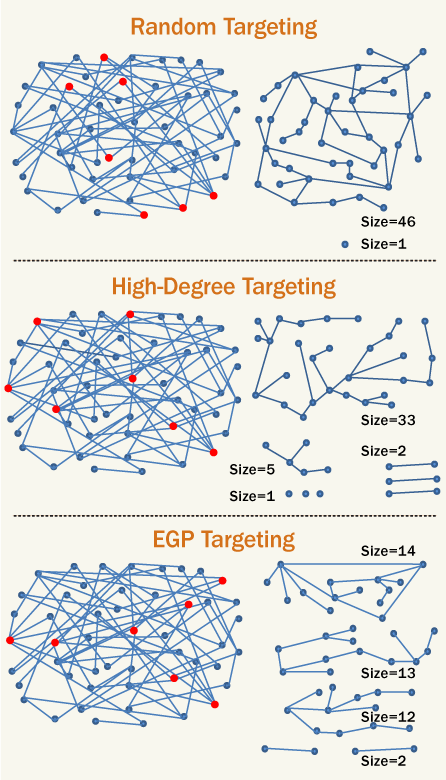- More than 2 years ago
When deadly bird flu strikes, six degrees of separation could be the distance from here to hell. Even if a vaccine is found to be effective, it may be impossible to produce enough shots for everybody quickly enough, so authorities would have to decide how to use the doses they have in the most effective way. Researchers are now proposing a new strategy for targeting shots that could, at least in theory, stop a pandemic from spreading along the network of social interactions.

Vaccinating selected people is essentially equivalent to cutting out nodes of the social network. As far as the pandemic is concerned, it’s as if those people no longer exist. The team’s idea is to single out people so that immunizing them breaks up the network into smaller parts of roughly equal sizes. Computer simulations show that this strategy could block a pandemic using 5 to 50 percent fewer doses than existing strategies, the researchers write in an upcoming Physical Review Letters.
“The strategy is to disintegrate the network,” says study coauthor Shlomo Havlin of Bar-IlanUniversity in Ramat-Gan, Israel. Havlin and his collaborators say their method could also offer a cost-effective way of blocking the spread of computer viruses on the Internet, or breaking up a terrorist network.
“The idea of splitting a network into equal subnetworks is very simple, yet quite successful,” comments network-theory expert Dirk Brockmann of Northwestern University in Evanston, Ill. “It’s a surprise to me that it seems to work so well.”
The hard part could be getting enough information about the structure of social networks to know which nodes to target, says Alessandro Vespignani, a physicist at IndianaUniversity in Bloomington who also studies mathematical models of pandemics. “I see this method as more promising in the context of computer viruses,” Vespignani says, because the Internet’s structure is easier to understand. In the case of pandemics, the strategy might still be effective for restricting travel by shutting down nodes in the network of global airline traffic.
Network-theory researchers have often assumed that one of the most efficient ways of blocking a pandemic is to immunize people who have the largest number of social connections. However, most people are separated from most other people by the proverbial six degrees of separation, and removing only the highly connected nodes might leave, say, 10 degrees of separation — but the people are still connected. The pandemic could still spread over large swaths of society, albeit at a slower pace. Meanwhile, Havlin and his team say, many doses of vaccine could be used in parts of the networks that have already been isolated and shrunk down.
“You’ve just got to use the doses you’ve got in a more clever way,” says coauthor H. Eugene Stanley of BostonUniversity.
To test their idea, the researchers designed a computer program that singles out the nodes that, when removed, will break up the network into parts of equal sizes. They tested it on models of several different types of networks. Their method was faster at stopping a simulated pandemic than was removing the highly connected nodes, they report.
In one of the most dramatic illustrations of their technique, the researchers simulated the spread of a pandemic using data from a Swedish study of social connections, in which more than 310,000 people are represented and connected based on whether they live in the same household or they work in the same place. With the new method, the epidemic spread to about 4 percent of the population, compared to nearly 40 percent for more standard strategies, the team reports.






